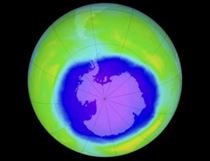Are MicroCare Critical Cleaning Fluids Ozone-Safe?
Yes. All of the MicroCare cleaners are 100% completely ozone-safe. None of the HFC, HFE or HFO cleaning fluids sold by MicroCare contain any ozone-depleting substances. Here are the details:
The Montreal Protocol, the Benchmark in International Co-operation
In the 1980’s a group of experts were tabulating all of the world’s ozone-depleting solvents and classified them into three groups: Class I ozone-depleters were the really bad actors, the Class II materials had an impact but to a much, much lesser degree; and the products that were completely ozone-safe. The lists of Class I and Class II products became the heart of the Montreal Protocol, the first international treaty to protect the ozone layer.
But nPB-based cleaners never made it on to the list. This is because at the time nobody was using nPB as a solvent. It just fell through the cracks.
So while it may sound like some people are splitting hairs, it is technically correct to say that nPB is not listed in the Montreal Protocol as an ozone-depleting solvent (“O.D.S.”) and it is not a “Class II” ozone-depleting material.
But the more precise truth is to report that while nPB is not a Class II O.D.S., it does have a slight ozone-depletion potential. The exact ozone impact is still under assessment from the U.S. Environmental Protection Agency, but many companies judge that 0.0006 is a reasonable estimate. This compares to 0.13 for HCFC-141b and 1.13 for CFC solvents. It’s a big step in the right direction.
Ozone-Depleters Today
MicroCare precision cleaning fluids are ideal replacements for the listed ozone-depleting solvents in precision cleaning applications. They are “drop-in” replacements for old-style solvents such as CFC-113, 1,1,1-trichloroethane, HCFC-141b and HCFC-225, as well as high-global-warming solvents such as perfluorocarbons (PFCs).

The “ozone hole” over Antarctica has shrunk by 4 million square kilometers from 2002-2015, mostly due to the reduction in ozone-depleting solvents. Source: BCC
